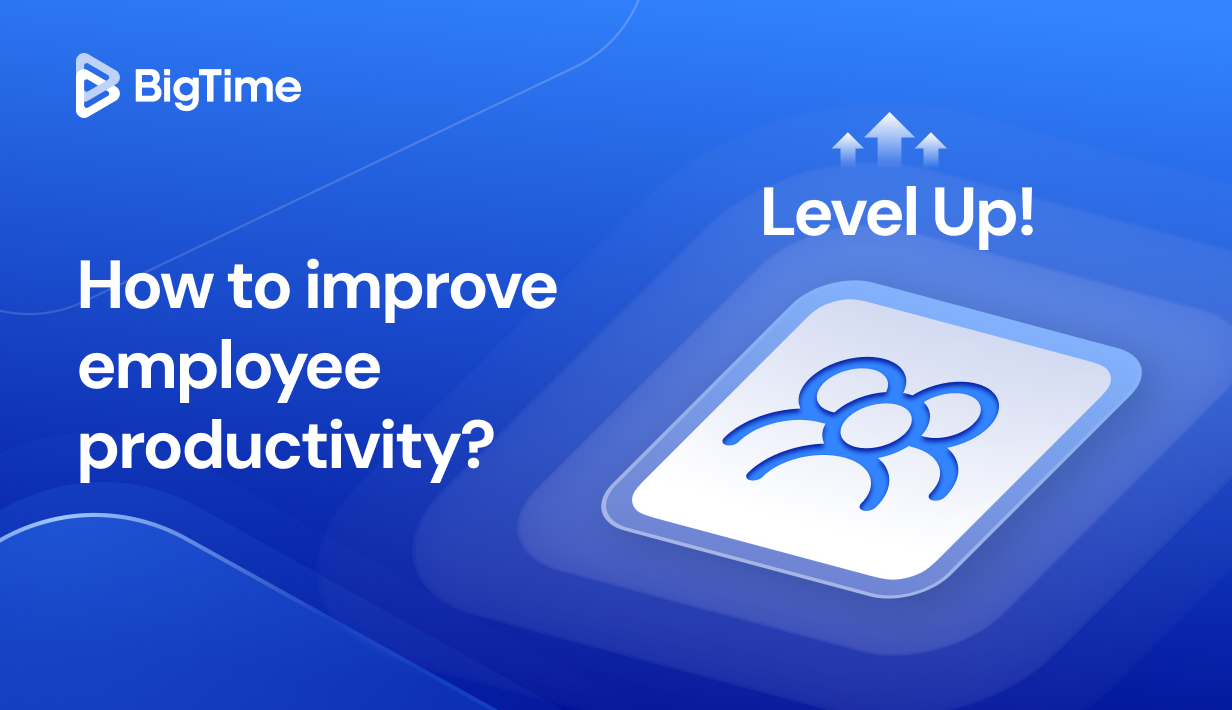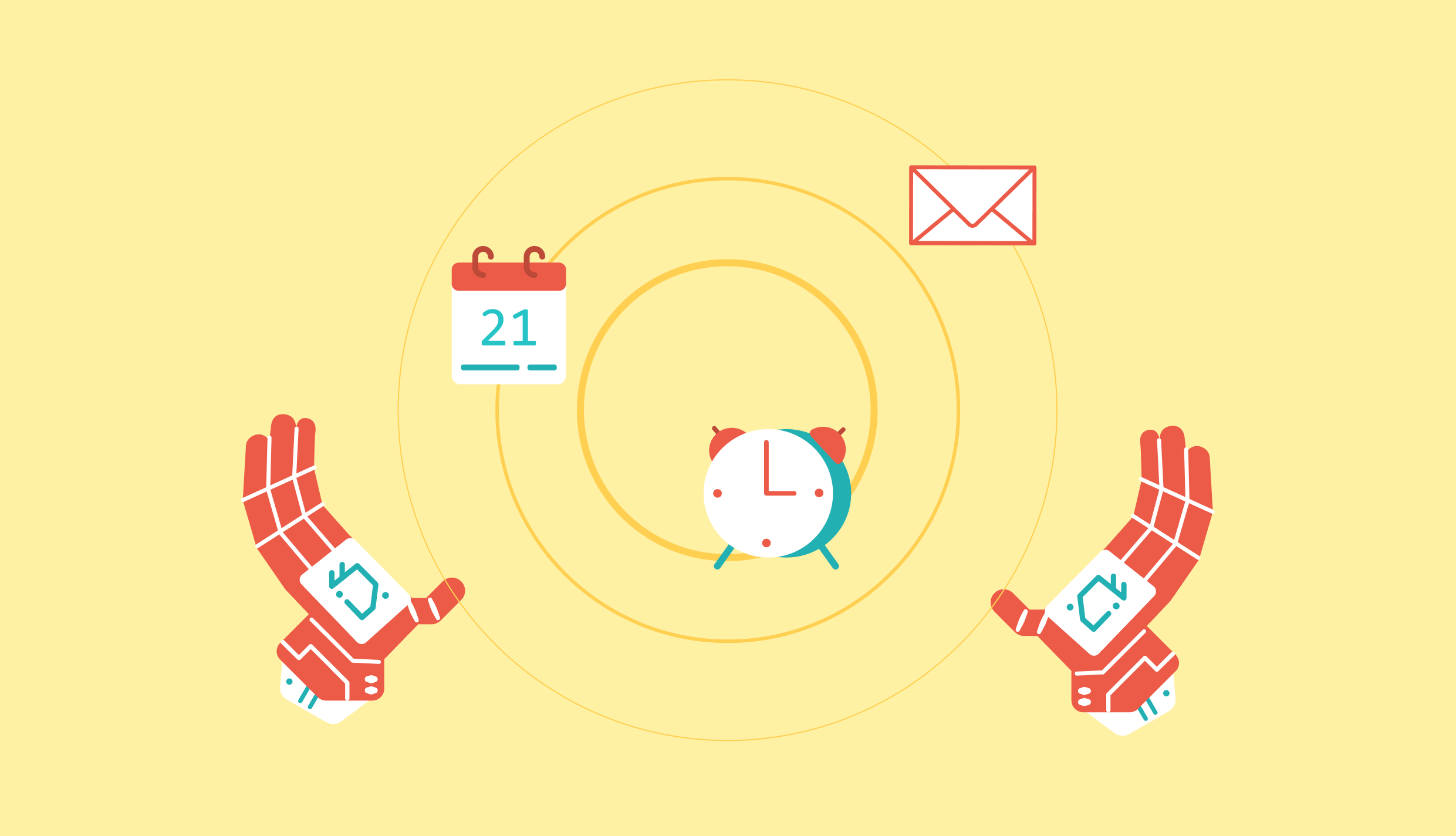Whether you manage a small team or oversee a large organization, knowing how to boost employee productivity can directly impact efficiency, profitability, and long-term growth. Yet, boosting performance isn’t just about asking people to work harder; it’s about creating the right environment, using the right tools, and empowering employees to thrive.
In this article, we’ll explore actionable methods to increase employee productivity, from workplace strategies to advanced technologies.
What is employee productivity?
Employee productivity is the measure of how efficiently employees complete tasks and contribute to organizational goals within a given timeframe. It reflects the balance between the quality of work delivered and the resources used to achieve it, such as time, effort, and tools. High productivity means tasks are completed faster, with fewer errors, and with maximum value generated for the business.
Understanding how to improve productivity is critical because it directly impacts profitability, engagement, customer satisfaction, and overall project KPIs. Productive employees complete tasks more efficiently, reducing wasted time and costs while increasing output quality. Higher productivity levels also foster stronger engagement, lowers turnover, and boosts customer satisfaction through faster, more reliable service.
How to calculate employee productivity?
Measuring productivity isn’t just about intuition—it requires clear formulas and data. The right calculation method depends on the type of work performed, but the general principle is to compare output produced against the resources used to achieve it.
The most common formula for calculating productivity is:
Employee Productivity = Total Output ÷ Total Input
Where:
- Output refers to completed tasks, projects, or revenue generated.
- Input usually includes time worked (hours) or total cost of labor.
For example, if a team produces 200 units in 100 hours, the productivity rate is 200 ÷ 100 = 2 units per hour.
What factors influence employee productivity?
Employee productivity isn’t just the result of individual effort; it’s shaped by a mix of skills, resources, and workplace conditions. By identifying and optimizing these factors, managers can learn how to improve employee productivity in a sustainable way.
Here are a few variables that might shape overall productivity in your business.
Skills and experience
An employee’s skills and experience directly affect how efficiently they perform their own tasks. Specialized team members with sufficient experience or certifications generally complete assignments with greater accuracy and require less supervision, while their junior colleagues might take longer to complete the same tasks.
Still, just having people with the right skills is just a part of the solution. Business leaders should also create a productive work environment by assigning their employees to the tasks that match their skills best; otherwise, the job satisfaction levels might soon drop, leading to higher turnover rates – and no employee training can change that.
Use of employee capacity
Maximizing employee capacity (or the maximum time they can spend working) means ensuring that each person’s workload is balanced and aligned with their strengths. Underutilized employees may become disengaged, while overworked employees risk burnout and reduced efficiency. Finding the sweet spot not only ensures the success of your project, but also supports employee health and raises morale.
Technology and tools
The right technology can dramatically improve how employees work and improve general workforce productivity. Modern project and resource management platforms, automation tools, and AI-driven solutions reduce manual effort, streamline processes, and provide real-time visibility into progress without overwhelming employees with additional responsibilities. Often they also facitilate automated updates and seamless communication, supporting business goals throughout every single project.
Employee morale
Motivation and morale are often overlooked but critical factors in workplace productivity – and yet, often they are the ones that have the biggest impact on employee performance. A motivated workforce is more engaged, committed, and willing to go the extra mile. Low morale, on the other hand, can lead to disengagement, absenteeism, and reduced performance.
Open communication
Clear and open communication keeps teams aligned and reduces misunderstandings that can slow down progress. When employees feel heard and informed, they are more likely to collaborate effectively and stay focused on shared goals. Additionally, transparent communication also builds trust between managers and employees, which is essential for long-term productivity improvements.
How to measure productivity? Productivity KPIs and indicators
Without clear benchmarks, it’s difficult to tell whether performance is improving or falling short. This is where productivity KPIs and metrics come in – and here’s how they can help you monitor team’s productivity.
Quantitative productivity metrics
Quantitative productivity metrics measure output in numbers, providing clear and objective insights into employee performance. These metrics are especially useful for identifying trends, setting targets, and comparing results over time.
In professional services companies, they generally include:
- Output per employee: Tracks how much work an employee completes within a specific period, such as units produced per week.
- Revenue per employee: Measures how much income each employee generates, helping businesses assess overall efficiency and profitability.
- Billable utilization rate: Common in professional services, this metric compares the number of billable hours worked to total hours, highlighting how effectively employee capacity is being used.
Qualitative productivity metrics
While numbers provide valuable insight, they don’t capture the full picture of employee engagement – that’s a job for qualitative KPIs.
Qualitative productivity metrics evaluate the quality of work and the employee’s impact on organizational culture. Those include:
- Work quality assessments: Reviews of accuracy, attention to detail, and adherence to standards help determine the value of an employee’s output.
- Customer satisfaction scores: Feedback from clients or customers reflects how well employees meet expectations, which is critical for long-term business growth.
- Collaboration and teamwork: Evaluating how effectively employees work together shows whether communication and cooperation are contributing to productivity. Constructive feedback is also also a part of such metric.
- Innovation and problem-solving: Recognizing employees who find creative solutions or streamline processes highlights contributions beyond standard output. Additionally, their input can also further improve work processes, making them easier to manage in the future.
Additionally, by combining quantitative and qualitative KPIs, businesses can measure employee productivity holistically. This approach ensures that teams are not only producing more but also delivering higher-quality results that support long-term success.
How to improve employee productivity? 10 proven strategies
While measuring performance through KPIs is essential, real progress comes from applying practical strategies that help employees work smarter, not just harder. The following 10 strategies will show you how to increase employee productivity in a sustainable way while staying true to company values.
Monitor workload
Monitoring workload on a regular basis ensures tasks are distributed fairly and aligned with each person’s capacity. Overbooking can quickly backfire; employees under constant pressure are more likely to make mistakes, miss deadlines, and experience burnout.
By adjusting assignments and improving utilization rates, managers create a balanced environment where employees stay engaged, deliver higher-quality work, and maintain steady productivity without being overwhelmed. On the other hand, they can also reduce waste by assigning additional tasks to employees too few projects in their calendar.
Improve utilization rates
Utilization rate measures how effectively employees’ available time is used for productive, often billable, work. When utilization rates are too low, it means employees face gaps in assignments, reducing overall output. On the other hand, when rates are balanced and aligned with realistic capacity, employees stay consistently engaged without being overworked.
By improving utilization rates with proactive capacity planning, managers can maximize productivity. Apart from increased productivity, this stategy also offers financial benefits. With minimum waste and maximum output, companies reduce spending while maximizing profits without ruining work life balance for their specialists.
Offer flexible working
Flexible working has become one of the most effective ways to improve employee productivity – and research shows it time and time again.
By allowing employees to use flexible working hours or work remotely, companies give them greater control over when and how they perform best and improve their work life balance. This flexibility reduces stress, improves work-life balance, and boosts morale, improving physical health of your specialists in the process. Happier, more motivated employees are naturally more productive!
Facilitate seamless information flow
Clear, accessible communication is a cornerstone of employee productivity. When everyone has the same information at the same time, teams can collaborate effectively, avoid duplicate work, and make faster decisions. For agile working, having a seamless information flow is a must.
The best way to ensure that everyone is on the same page is by using tools that provide live updates. Project management platforms with real-time data sharing keep all stakeholders aligned, whether they’re in the office or working remotely. This constant visibility allows employees to set clear expectations, respond quickly to changes, and maintain steady productivity across the organization.

Set realistic goals
To boost productivity, you first need to define what does being productive mean for your business. In other words, you need to set goals that actually describe what you want to achieve.
When objectives are clear, specific, and achievable, employees know exactly what is expected and can focus their energy on completing tasks efficiently. Unrealistic goals, on the other hand, often lead to frustration and declining morale. By aligning targets with available resources and team capacity, managers create a sense of direction and motivation that drives consistent, high-quality performance without affecting employee motivation.
Get rid of unnecessary assignments
Sometimes even small changes can improve workplace productivity in seconds – especially when it comes to removing unnecessary assignments from the calendar. Endless meetings, excessive reporting, or assignments unrelated to core responsibilities waste valuable time and drain energy that could be directed toward meaningful work. When employees are forced to juggle irrelevant tasks, their focus on high-priority projects diminishes, leading to delays and lower-quality results.
Maintain positive work environment
Elements such as mutual respect, recognition of achievements, opportunities for growth, and a healthy work-life balance create a company culture where employees feel valued and motivated. When employees feel supported and enjoy coming to work, they are more engaged, creative, and efficient. In short, a positive workplace not only improves morale but also directly increases employee productivity by helping teams perform at their best.
Focus on well-being
Employee physical and mental health is closely tied to productivity. When employees are physically healthy and mentally supported, they can handle challenges more effectively and sustain high performance over time. Poor well-being, on the other hand, often leads to fatigue, absenteeism, and burnout, all of which undermine employee productivity. For than reason, companies that promote wellness programs, encourage regular breaks, and support mental health initiatives create an environment where employees feel cared for and empowered.
Offer new opportunities
Providing employees with opportunities for professional development is one of the most effective ways to improve productivity. Training, upskilling, and career advancement programs not only expand employees’ knowledge but also keep them motivated and engaged.
Use the right tools
No matter how skilled and motivated employees are, they can only be as productive as the tools they use. Outdated systems, manual spreadsheets, and disconnected platforms often slow progress and create unnecessary frustration. The right project management and professional services automation tools, such as BigTime, streamline workflows and give employees the resources they need to focus on meaningful work instead of repetitive tasks.
BigTime helps improve employee productivity by:
- Automating manual tasks – From time tracking to expense reporting, automation reduces errors and saves valuable hours.
- Optimizing resource allocation – With Gantt charts and real-time scheduling, managers can assign tasks based on availability and skill, avoiding overbooking.
- Tracking utilization rates – BigTime shows how employee capacity is used, helping balance workloads and improve efficiency.
- Providing live performance insights – Dashboards and reports keep everyone updated, allowing quick adjustments and smarter decision-making.
- Integrating with other systems – Seamless connections with tools like QuickBooks, Salesforce, and Sage eliminate data silos and ensure smooth information flow.

How can AI improve employee productivity?
AI is rapidly changing the way businesses operate, offering tools that make work faster, smarter, and more efficient. Fortunately, it can also help your business embrace the change and improve employee productivity in the process – here’s how.
Automating repetitive tasks
One of the clearest ways AI improves productivity is by automating repetitive tasks. Activities such as time entry, scheduling, expense tracking, and report generation often consume hours each week that could be better spent on creative or strategic work. AI-powered systems handle these tasks automatically, minimizing errors and ensuring employees can dedicate their energy to projects that matter most.
Improving resource allocation
AI also enhances how businesses manage their workforce by making resource allocation more precise. Instead of relying on guesswork, AI analyzes skills, availability, and workload to ensure tasks are assigned to the right people at the right time.
For example, BigTime’s AI-driven demand matching automatically suggests the best-fit employees for each project based on their skills and capacity. This prevents overbooking, avoids underutilization, and ensures that employees work on tasks that match their strengths, maximizing productivity across the board.
Simpler decision-making processes
Another way AI improves employee productivity is by simplifying decision-making. Managers often face overwhelming amounts of data when tracking performance, budgets, and project timelines. AI tools can process this information instantly, highlighting risks, predicting outcomes, and recommending actions. With smarter insights available at a glance, managers can make faster, more confident decisions, while employees benefit from clearer direction and fewer disruptions.




